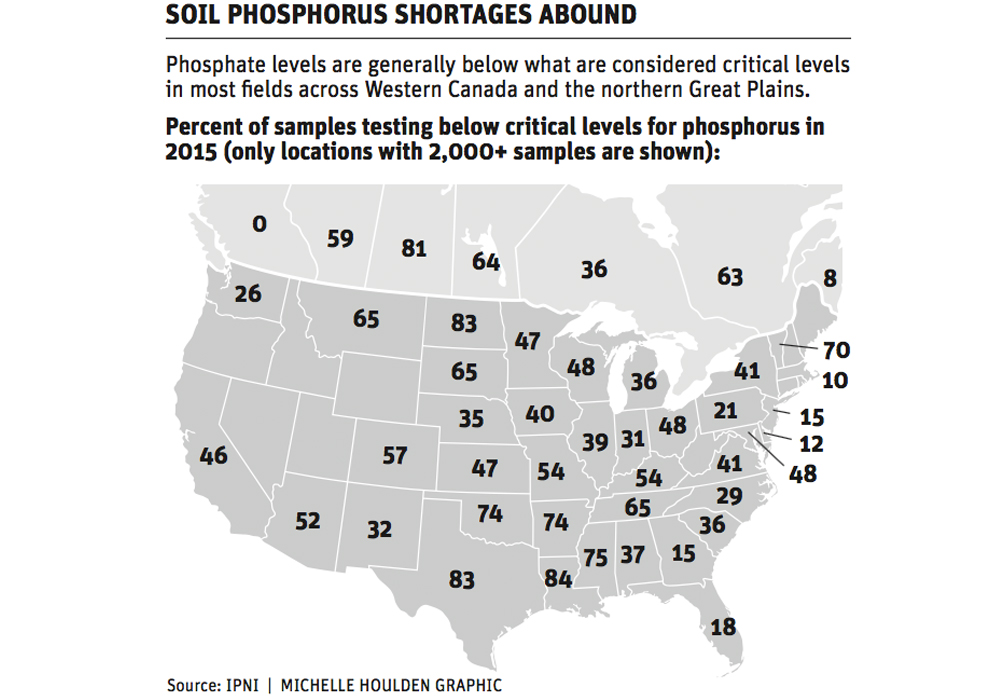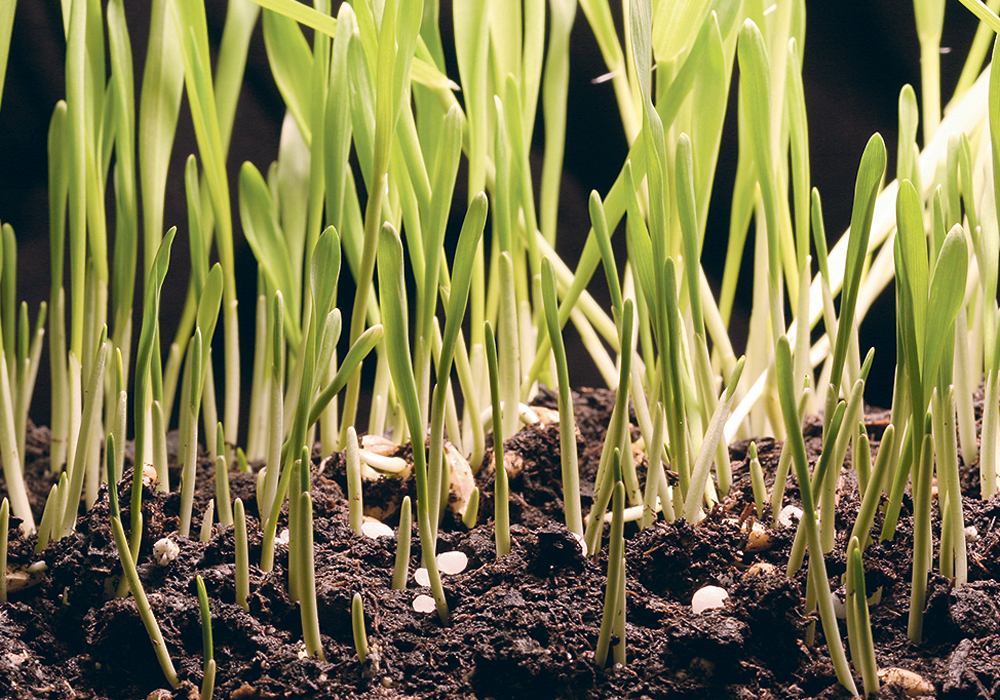I had never realized until this winter’s farm shows that there were so many ways to optimize, synergize, maximize, energize and revitalize my soil.
Those seemed to be the buzz words at many of the booths I visited.
However, I was also disturbed that the companies promoting these products were unable to show me data beyond the glossy side-by-side comparison shots and the ever present field results. In fact, most of the organizations seemed to have contempt for small plot research.
The facts are that unless properly designed, field scale research yields nothing more than pretty photos.
Read Also

Phosphate prices to remain high
Phosphate prices are expected to remain elevated, according to Mosaic’s president.
Many of these new glamour products are biological products. They contain living organisms that react differently with the vastly different soils and growing conditions in Western Canada.
Most biological products, outside of rhizobacteria on legumes, seem to work or perform as advertised 20 percent of the time.
For the other 80 percent of the time, they show little positive yield or quality responses and may show negative responses. The problem is that it is up to farmers, and not the manufacturer or seller, to determine if these products will work under their conditions.
Nutrition is the other group of new glamour products. They usually contain small amounts of macronutrients in various combinations with micronutrients.
Many of them claim to decrease stresses and maximize yields.
Some forms of macros, such as nitrogen-phosphorus-potassium and sulfur, are available for foliar uptake, but they tend to be costly.
Many studies have shown that the most efficient and cost effective way to apply macronutrients in most western Canadian conditions is to apply them before seeding, at seeding or shortly after seeding.
Studies have also found positive yield and economic responses to using micronutrients but only when there are nutrient deficiencies.
Farmers can take steps to determine if they might have a micronutrient deficiency:
- Eliminate other possible causes of poor growth, such as drought, flooding, salinity, disease, herbicide injury and shortages of nitrogen, phosphorus, potassium and sulfur.
- Take soil samples in areas of concern. These should be sampled at zero to six inches.
- Determine if a particular soil or crop is likely to be deficient in a micronutrient. Critical levels can be found in a variety of publications.
- Determine if crop visual symptoms are similar to typical deficiency symptoms for specific micronutrients.
If micronutrient deficiencies are suspected, take separate soil and tissue samples from both affected and unaffected areas. Submit samples to a reputable lab for complete nutrient analysis.
Tissue sampling is general superior to soil analysis to confirm micronutrient deficiencies.
When indications suggest a micronutrient deficiency, apply them in field test strips. Evaluate crop recovery and yield compared to untreated areas.
Recent amendments to federal fertilizer regulations have removed regulatory requirements for efficacy and quality, which has created a bit of a wild west when it comes to the sale of these products.
Consider these points when buying a new fertilizer product:
You are in control. It is your money.
Ask for replicated research results in your area or similar areas.
Set up a series of untreated strips so you can measure the efficiency of the products used.
If you see comments such as “will improve” or “guaranteed to,” ask how this is measured and hold the companies to these statements.
To quote my friend and former colleague Rigas Karamanos, “in God we trust, all others bring your data.”
Thom Weir is an agronomist with Farmer’s Edge. He can be reached by emailing thom.weir@farmersedge.ca.
















